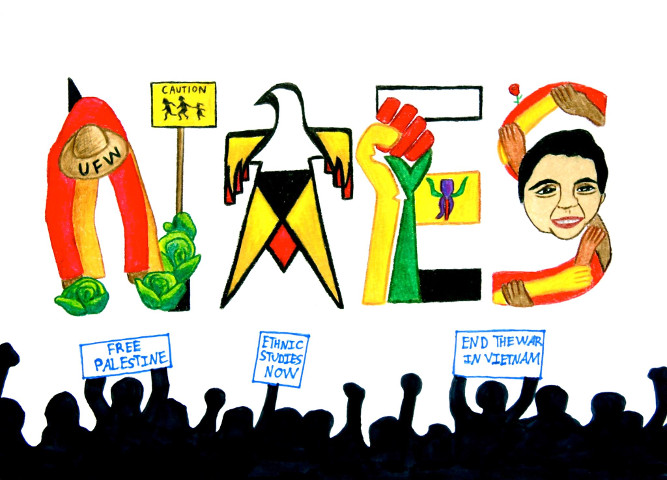Ethnic Studies Review

Orginal Publication Date
2008
Journal Title
Ethnic Studies Review
Volume
31
Issue
esr/vol31/iss2
First Page
1
Last Page
34
Abstract
A late nineteenth-century trade card, or a color-printed circulating advertisement, touts Shepherd and Doyle's new "Celluloid" waterproof collars, cuffs and shirt bosoms (Fig. 1).1 These "economical, durable, and handsome" clothing items require less starching and washing, and so remove the need for Chinese laundries. The text on the reverse side includes directions on how "to remove yellow stains," and the image enacts a kind of literal version of this removal. The slovenly laundryshop (the clothes overflowing the basket, the linens hung up askew, the steaming basins), the mix-and-match, gender-ambiguous garments of the workers, and their thin, slouching bodies all participate in the racist stereotype of Asians as dirty, effeminate and alien others. The caption proclaims the product to be "The Last Invention"; the "last" indicates finality, both in terms of modernity as the final stage of history and of a solution to the problem of unwanted immigrants. A group of Chinese male laundry-workers are so taken aback by this product that their pigtails stand in erect consternation. Their reaction stems both from the realization that they must return to China because their services have become unnecessary as well as from pure awe at the invention itself; in both cases, the scenario and its appeal apparently rely on these acts of recognition by the Chinese characters. Furthermore, the advertisement's status as such - merely advertisement - hides the illogicality of the celluloid salesman's presence in the laundry at all. The salesman, wearing a garish plaid suit and a bowler hat, appears to be one of those traveling salesmen who might peddle patent medicines, yet he bears the product eliciting such awe and consternation. Rather than selling the product to the Chinese workers, he appears simply to be taking gratuitous pleasure in introducing the workers to the agent of their impending misfortunes.
Rights
Copyright ©ESR, The National Association for Ethnic Studies, 2008



Comments
Cultural Insights: Practices and Policies